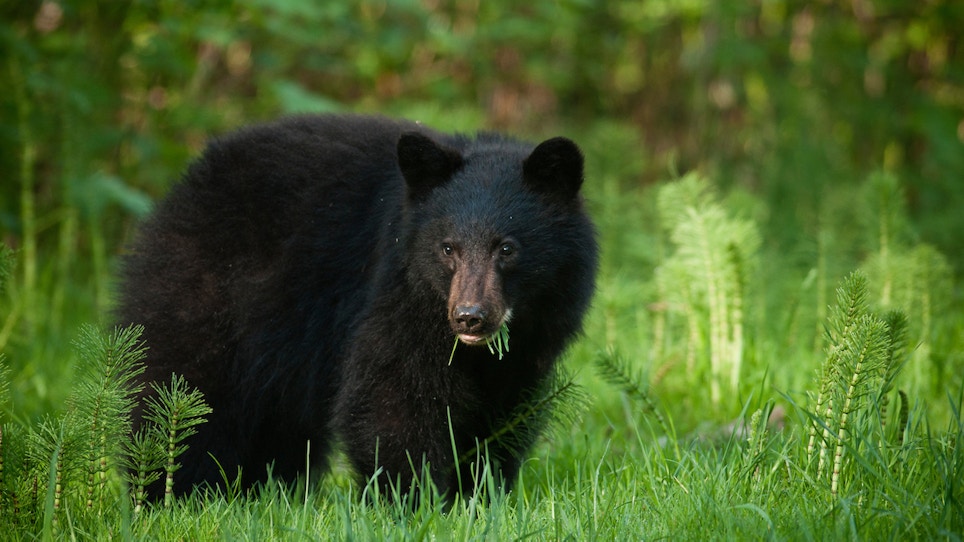
Learn the proven clues veteran hunters use to determine whether a bear is mature or young. (Photo: John Hafner)
When you first see a bear in the wild, it almost always looks huge. That’s why you should almost never shoot the first bear you encounter on your first bear hunt. The only exception might be if you’re with an experienced guide and he or she urgently hisses “take him!”
The best way to analyze a bear to determine whether it’s a mature animal you want to kill or a younger bear that should be passed up is to study a number of different physical traits. Beyond those clues, watching the animal’s demeanor and how it interacts with other bears can also give helpful insights into its age, size and status in the bear hierarchy.
1. First Impression
If your first impression is that it’s a large bear, you may be right. But sometimes initial impressions are deceiving. If there’s no object or other animal around the bear, for instance, it’s hard to judge size. If it wanders out on a coastal flat or into a clover field, it’s almost impossible to gauge size without further analyzing physical traits.
If you’re hunting over bait, the container it’s in can help you judge a bear’s size. The outfitter will give you guidelines in this case depending on how big the barrel is. Some guides also put logs out that are a certain length. If the bear measures longer than the log, it’s a keeper.
2. Leg Position
One of many physical traits you can home in on is the appearance of the bear's legs. If they seem to be positioned far apart, that likely means it’s a good bear. If the front and rear legs look like they’re close together, it’s probably a small animal.
3. Leg Length
Besides being positioned far apart, the legs on a big bear also look short. They aren’t, but old boars usually have large stomachs that almost drag the ground. This makes the legs look short.
If lots of daylight shows between the stomach and the ground, the legs will look longer. You’re likely gazing at a small bear.
4. Ear Position
Ears also can give clues to a bear’s age and size. If they look like they come out the sides of the animal’s head, you’re looking at a large bruin. If they seem to pop up off the top of the bear’s head, it’s a small one.
5. Ear Size
Also consider proportion. If the ears look about normal for the bear’s head and body, it’s probably an average bear. If the ears look large, the bear is likely young. Pass it up.
If the ears look small, on the other hand, that’s a strong indication you are studying a trophy bruin. Get ready to shoot or release an arrow.
6. Face
Faces of old boars look thicker and blockier than females or young males. Juxtaposed against his huge body however, a big bear’s head may look rather small.
7. Shoulders and Neck
Like a mature buck, the front shoulders of a mature bear are broad and muscular. They carry that bulk right down into beefy forelegs. Necks of big bears are thick and short, merging without missing a beat into the animal’s body.
8. Demeanor
Attitude and behavior can also give you clues to an animal’s age or status in the local bear hierarchy. A bear that swaggers into bait or saunters nonchalantly onto a tidal flat is likely a mature boar. They are confident and calm, seemingly afraid of nothing.
9. Attitude Towards Other Bears
If you are watching several bears and they scurry away when another one walks out, that newcomer is your trophy. Bears have definite hierarchies and pecking orders, just like deer herds. Older bears are cool, calm, and plodding and often act as if smaller bears around them don’t exist.
Eventually, through experience and studying photos and DVDs, you’ll learn to judge bears just like bucks. And you’ll know it when you spot the right bear. A feeling will well up inside that leaves no room for questions.
You’ll know instinctively: this is the bear I’ve been looking for.
Take him!





